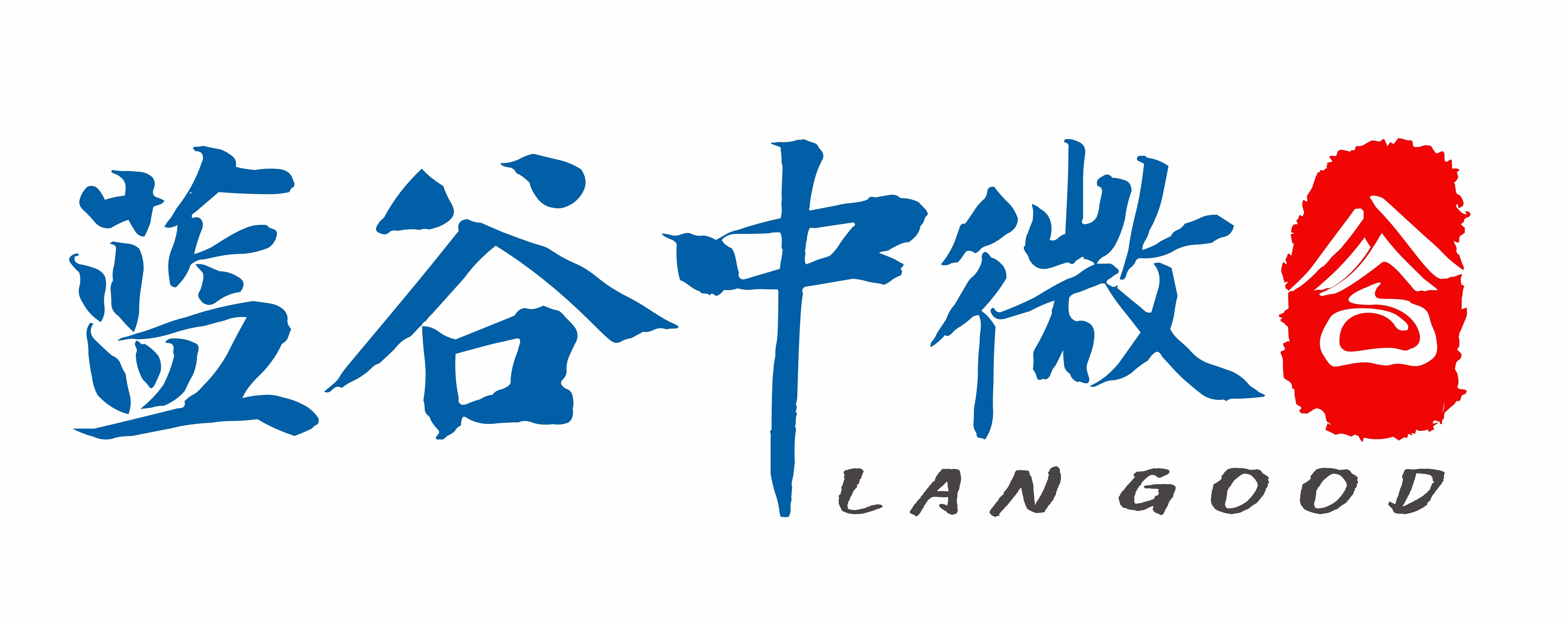16
2022
-
12
Application of Clostridium butyricum in Animal Production -- Pig Raising

Clostridium butyricum (Clostridium Butyricum) is a bacterium of the eubacterial kingdom in the field of bacteria. It is a Gram-positive anaerobe in the genus Clostridium (Clostridia) of the order Clostridia (Clostridiales) of the family Clostridium (Chlostridaceae) of the genus Clostridium (Clostrdium). There are many doctoral and master theses on the application of Clostridium butyricum in animal production. Many high-quality articles have been published in high-level academic journals such as Journal of Animal Nutrition and Poultry Science. At the same time, aquaculture enterprises have also accumulated some empirical test data in concrete practice. Application of Clostridium Butyricum in Pig Production Supplementation of Clostridium Butyricum (1 billion cfu/kg) or 3000 mg/kg zinc oxide in weaned piglets diets can significantly reduce diarrhea rate (P<0.05)(Figure 1), improve intestinal mucosal morphology, reduce intestinal permeability and up-regulate tight junction protein gene expression, thus protecting intestinal mucosal barrier function, reduce the adverse effects caused by early weaning stress (Table 1, Figure 2)[7].
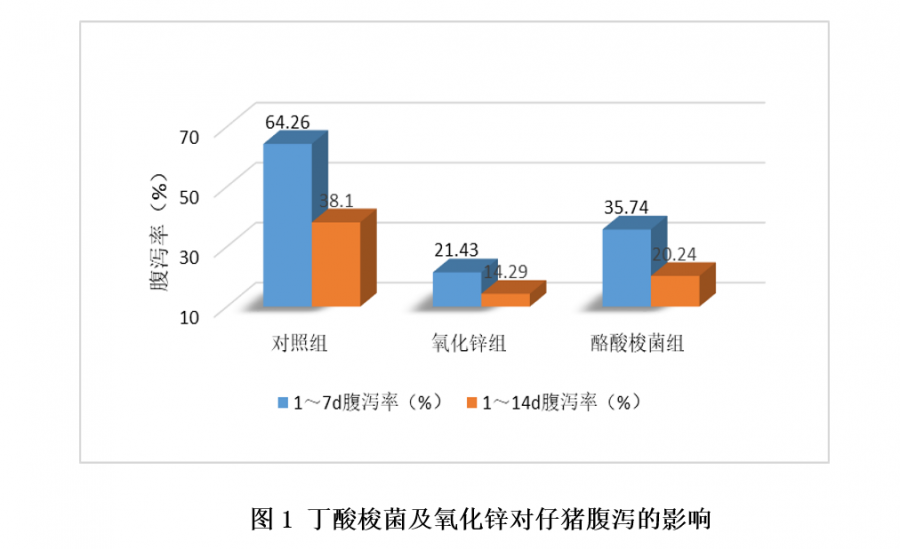
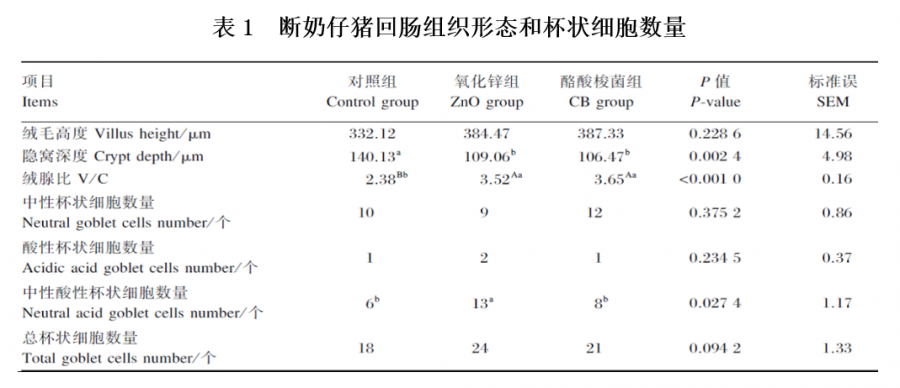
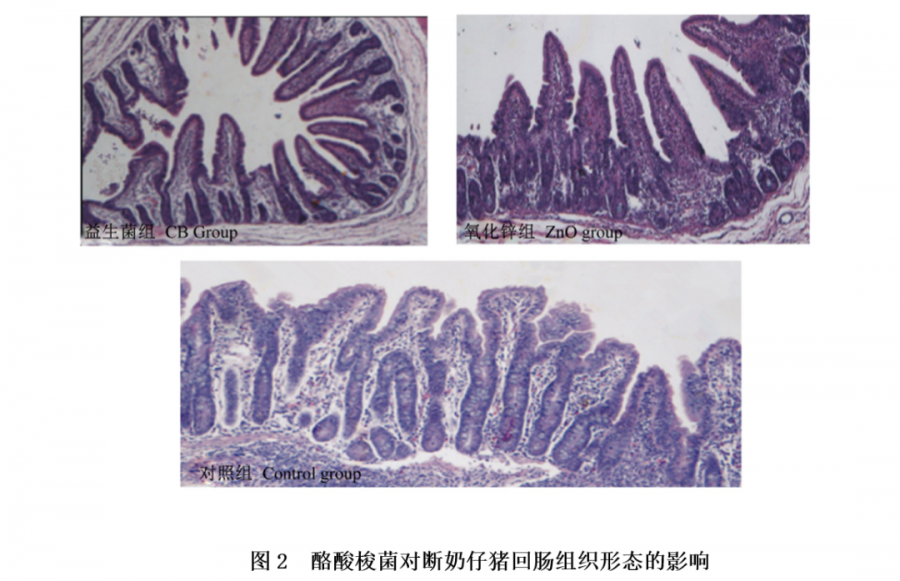
Clostridium butyricum can significantly increase the activities of duodenal amylase, jejunal amylase and lipase (P<0.05), and significantly increase the apparent digestibility of dry matter, crude protein, calcium and phosphorus (P<0.05)[8]. The addition of Clostridium butyricum (0.5 billion cfu/kg) to the diet increased the average daily gain (P<0.05), improved the feed-to-weight ratio (Figure 3), increased the relative expression levels of NLRP mRNA and tight junction protein mRNA in jejunum and ileum epithelial cells, and also increased the content of anti-inflammatory cytokine IL-10 in serum, it reduced the content of proinflammatory factor IL-β in serum, and improved the intestinal mucosal barrier function and inflammatory response of weaned piglets. In addition, the intestinal flora balance is also regulated (Table 2, Table 3, Table 4)[9].
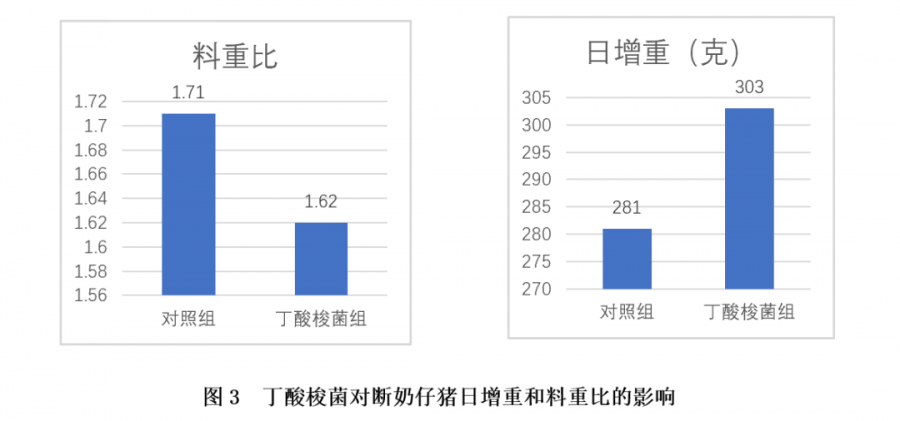
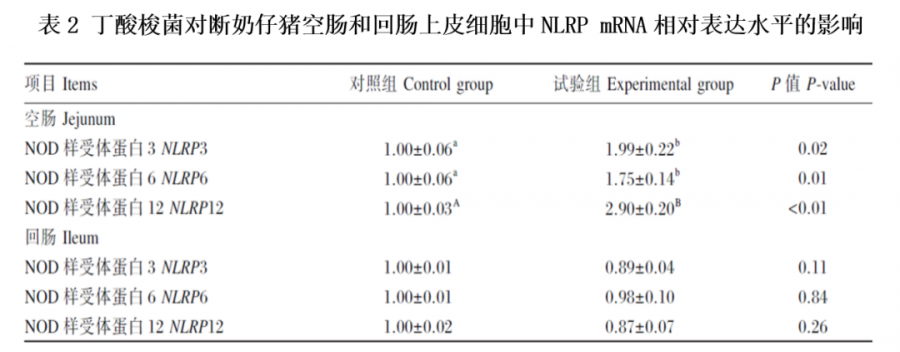


A large feed group in China added Clostridium mesobutyricum (0.5 billion cfu/kg) to the feed of piglets with severe diarrhea. The feces of piglets began to form on the second day after use and returned to normal after one week. (Photo credit: Shimiao Village, Baicheng Town, Gaomi, Shandong, May 2019).
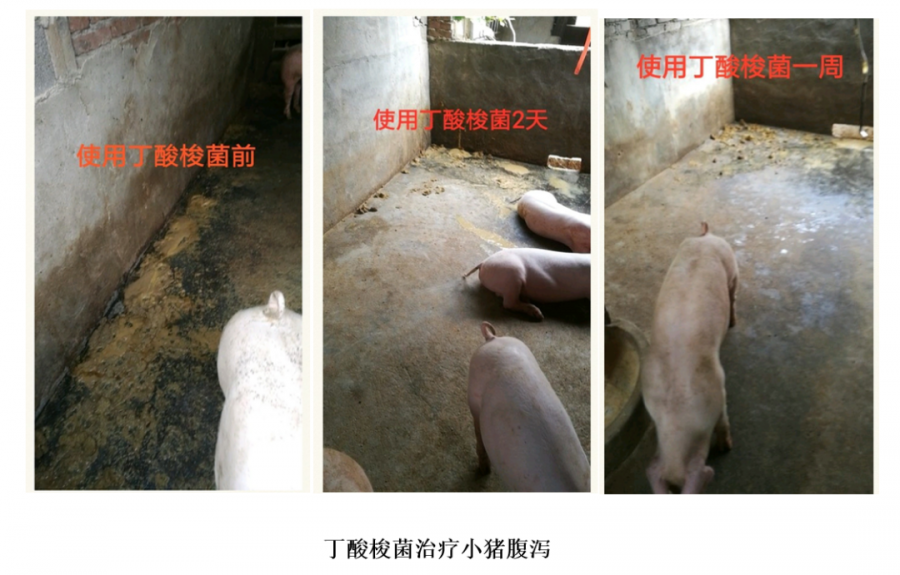
Control of the Quality of Clostridium Butyricum Products Used in Animals Clostridium Butyricum is the same as other probiotics. Different strains have different proliferation speed and the type and concentration of products. Therefore, it is very important to screen a strain of Clostridium butyricum that is beneficial to animal health. In addition, the application in animal production also involves the tolerance of feed processing (damp heat, extrusion) and storage resistance, and the convenience of use and the matching degree of drinking water line should also be considered for drinking water products. Through years of systematic screening, Blue Valley Zhongwei has selected a high-yield short-chain fatty acid, such as acetic acid and butyric acid, and currently the only proprietary strain of Clostridium butyricum that produces formic acid for large-scale production. The strain also has the advantages of high sporulation rate, strong stress resistance, rich enzyme production and processing resistance. In terms of fermentation and post-treatment, Blue Valley Microsystems adopts multi-pipeline fluid production line, Siemens PCS7 process control system and unique micro-package technology to achieve accurate, efficient and stable production. The coated Clostridium butyricum product is used in the feed, and the retention rate still reaches more than 90% after 5 minutes of conditioning at 85 ℃. The drinking water product adopts 100 instant carrier, which will not block the waterline. All products are vacuum packed with aluminum foil. References:[7] Pang Min, Effects of Clostridium butyricum on Growth Performance, Intestinal Tissue Morphology and Intestinal Permeability of Weaned Piglets, Journal of Animal Nutrition 2016,28(7)2113-2121;[8] Wang Tenghao, Screening of New Clostridium butyricum and Its Effect on Growth Performance and Intestinal Function of Weaned Piglets, PhD Thesis 2015 of Zhejiang University;[9] Li Yupeng, effects of Clostridium butyricum on growth performance, intestinal barrier function and serum cytokine content of weaned piglets, Chinese Journal of Animal Nutrition 2017,29(8)2961-2968;
Related News
